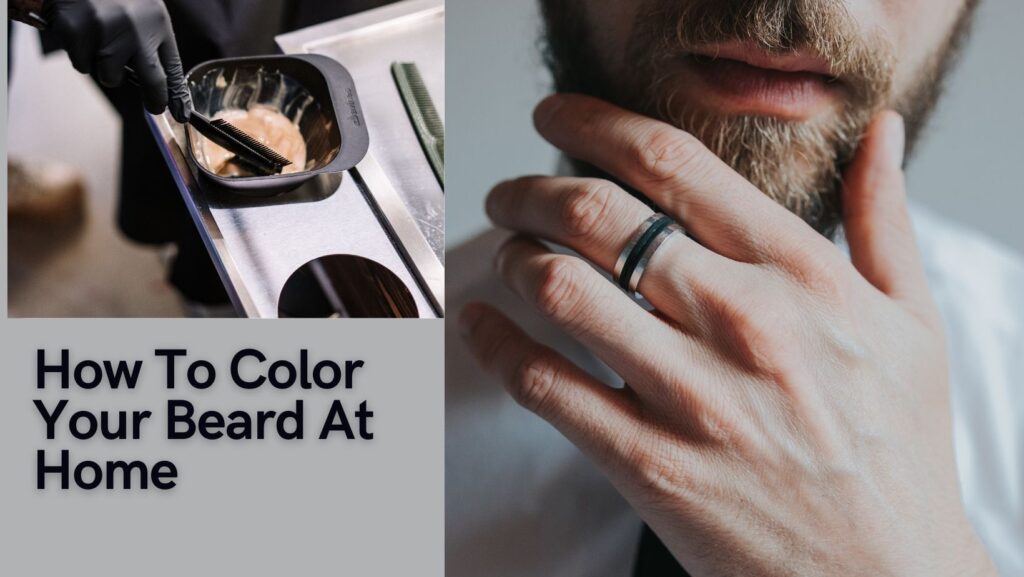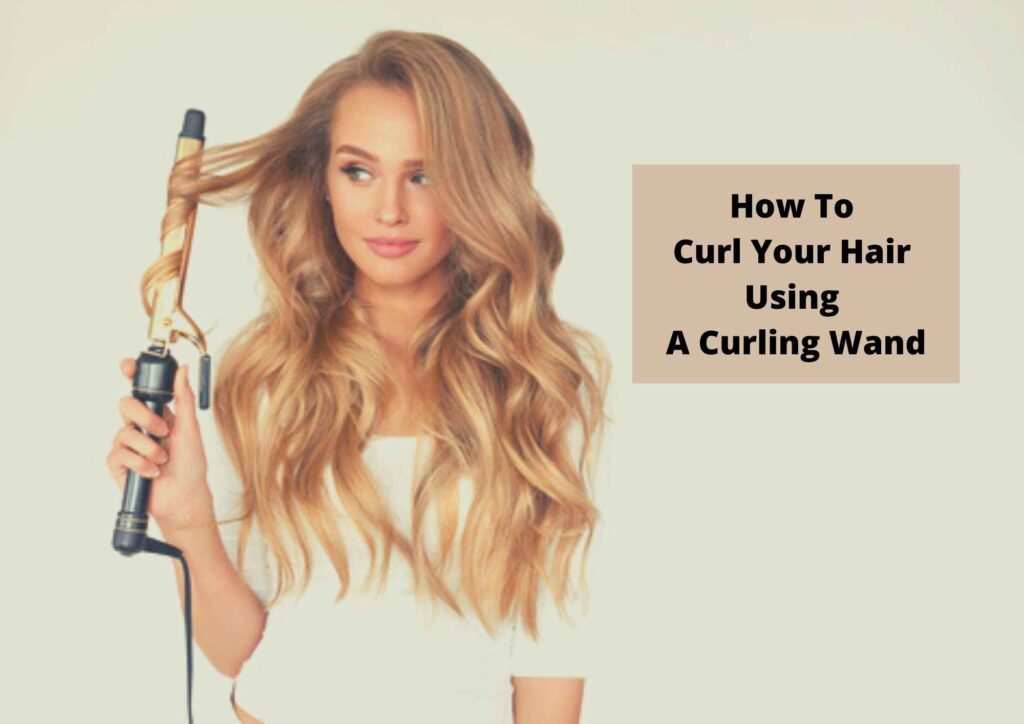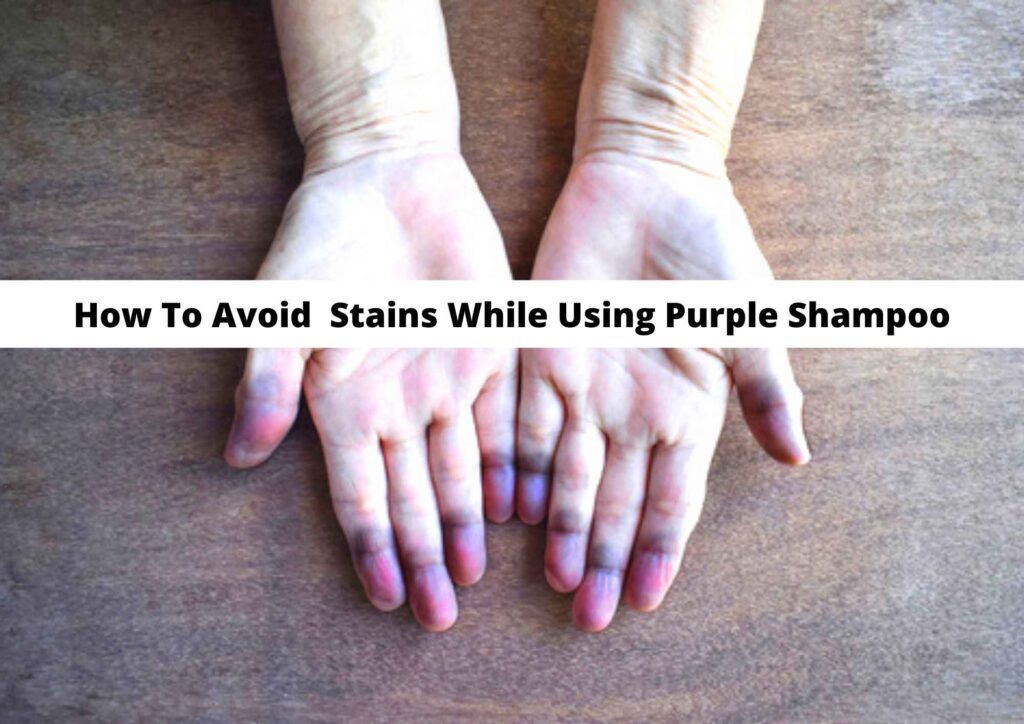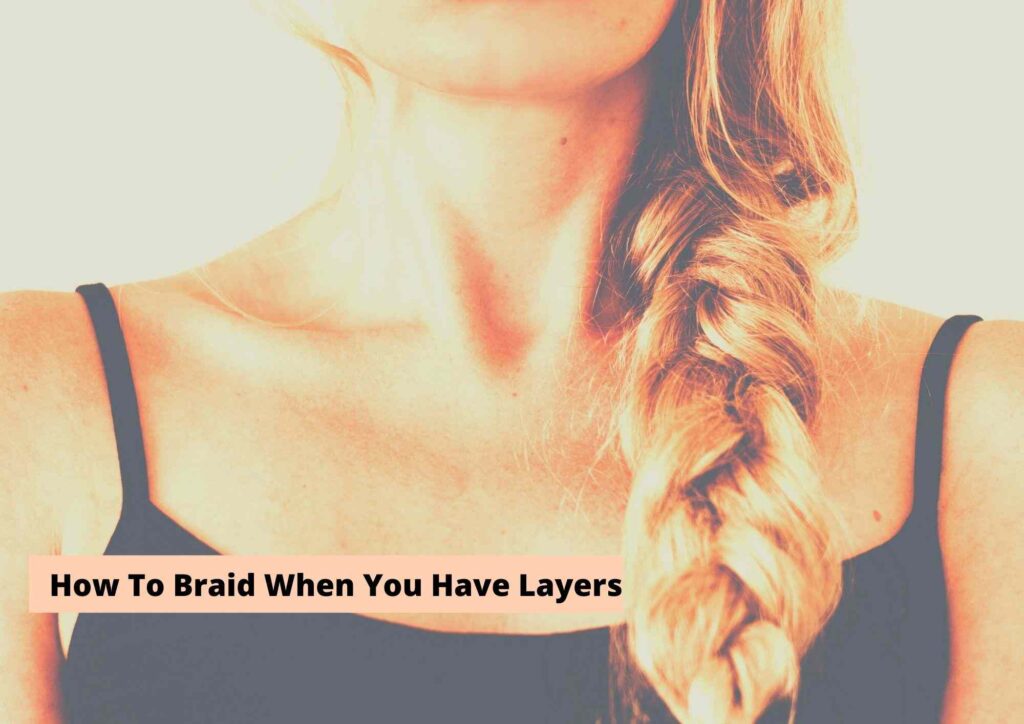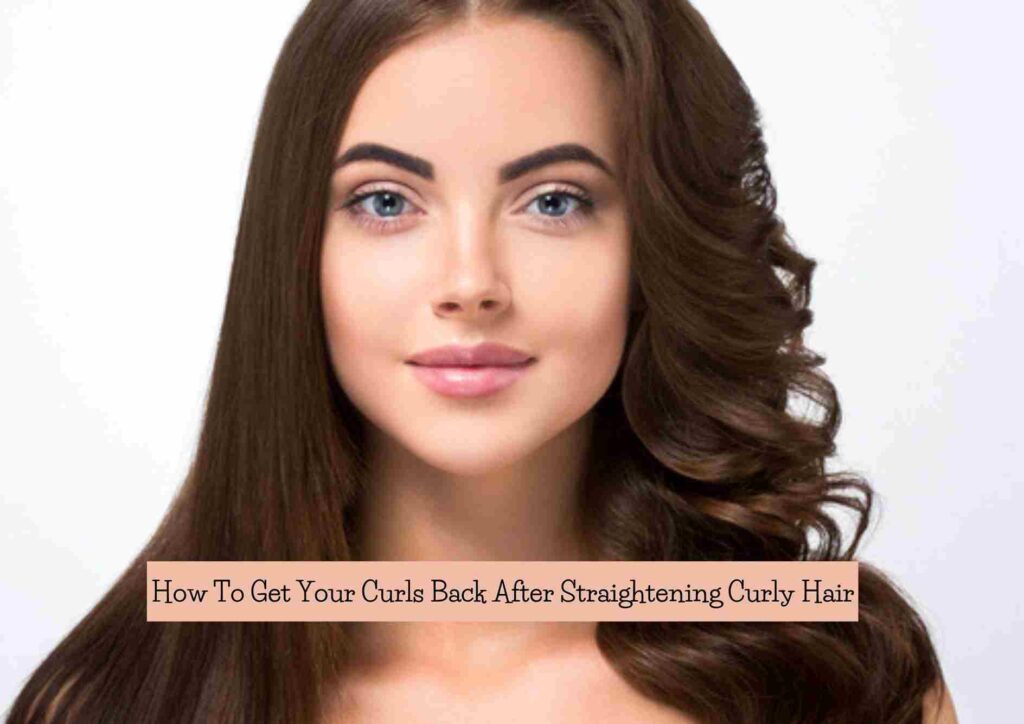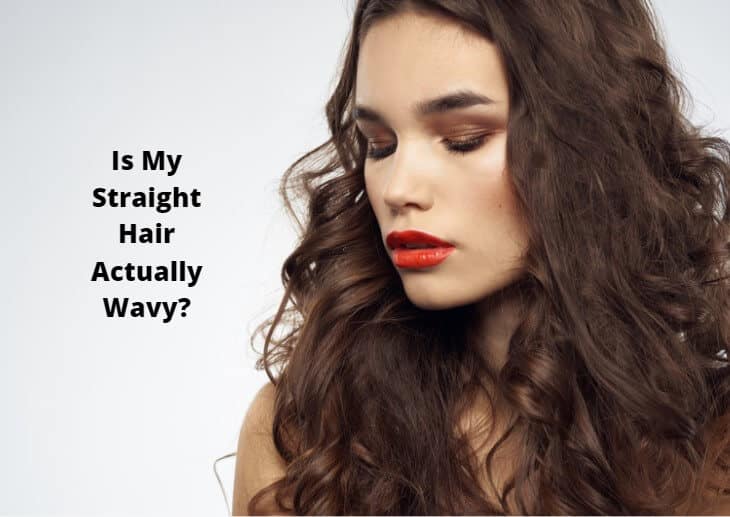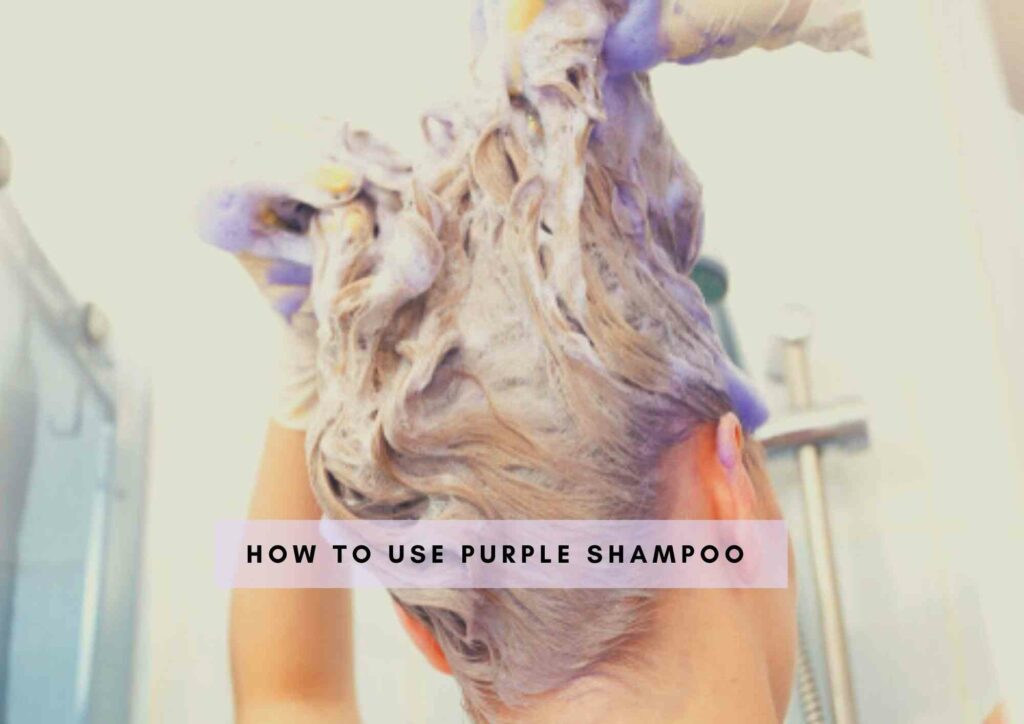‘Why has my hair texture changed from curly to straight?’ Can it happen with age? And is this change permanent? Find it all here!
Your hair texture changing from curly to straight can seem like a mystery, but you’ll be surprised to know how commonly Googled this question is.
As someone who grew up with curly hair and now has a 60% curly and 40% straight texture, I’ve done my fair share of research about changing textures and reversing the process.
If you are struggling, here is a complete guide on why it happens, how to deal with it, and the specific haircare routine you need to follow. Let’s start with understanding why it happens.
Why Has My Hair Texture Changed from Curly to Straight?
Hair texture can change from curly to straight due to various factors, including hormonal shifts, aging, chemical treatments, heat styling, and even stress. Hormones can affect the shape of your hair follicles, and changes in hormone levels during puberty, pregnancy, or menopause can alter your curl pattern. Additionally, overuse of straightening treatments or frequent heat styling can weaken the hair’s protein structure, leading to a loss of natural curl. To understand your specific situation, consider any lifestyle changes, recent treatments, or health shifts that may have contributed to this change in your hair’s texture.
Key Takeaways:
- Hair texture changes, such as transitioning from curly to straight, can result from various factors including hormonal shifts, aging, chemical treatments, heat styling, and stress.
- Genetics and hormonal changes during puberty, pregnancy, or menopause can significantly influence curl patterns.
- As individuals age, hair texture may evolve due to hormonal fluctuations, diet, and other lifestyle factors.
- While complete reversal of texture changes is challenging, adopting a personalized haircare routine can help minimize damage and promote healthier curls.
- This routine may include moisturizing, using DIY masks, protective styling, minimizing heat exposure, regular trims, dietary adjustments, and prioritizing sleep and exercise.
- Overall, maintaining a holistic approach to haircare and overall health can effectively manage texture transitions.
Why Does Hair Change Texture?

While science doesn’t give us too many straight answers, there are many pieces of research and expert-led projects that aim to find the answers.
One of the first clues is in your genes. If both your parents give you the curly hair gene or the straight hair gene, you end up with one type of hair.
But if, for example, your mom gave you the curly hair gene and your dad gave you the straight hair gene, you could end up with something in between.
The second possible explanation could be changing hair follicles. Your hair primarily comprises amino acids that make up the protein and keratin.
Depending on the amino acid bonds, your hair grows as thick, thin, curly, straight, or wavy.
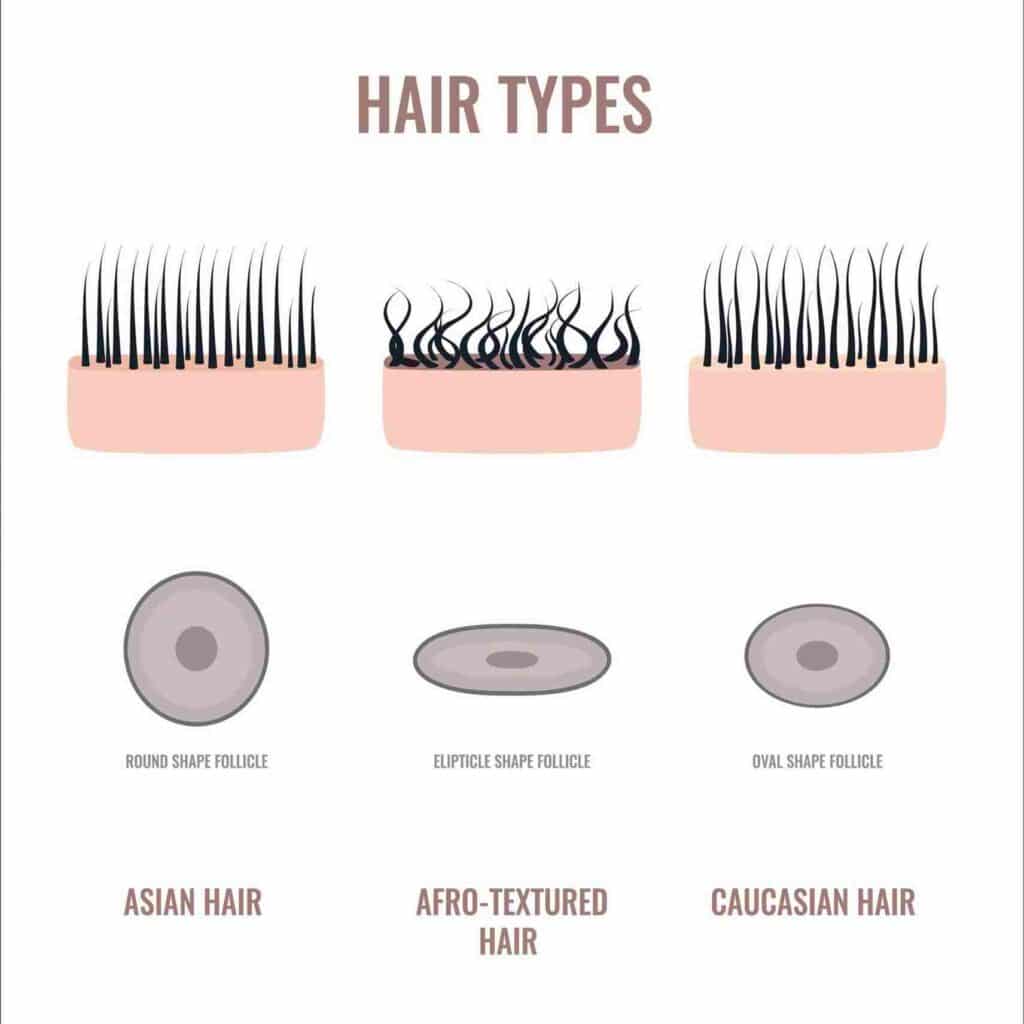
So a change in the follicle can lead to a change in your hair’s overall texture as well.
Although there’s no scientific evidence of why that happens, hair experts believe it has to do with a combination of genetics, and hormonal changes.
Your hair is also constantly changing. The hair you had at the age of two is not the same as when you were a teenager.
So your hair follicle could also be going through a natural changing process.
Does Hair Texture Changes As Per Your Age
In your teenage years, you will notice that your hair grows faster—the rush of hormones that cause puberty also pushes the hair to grow thicker.
However, this period can also cause more sebum, leading to greasy, dull-looking hair. If you have lighter hair, you may also experience a slight darkening.
In your ‘20s, although your diet plays a massive role in your hair game, your mane will be fuller and lustrous.
Your hair will thin at a rate of 3% every year after the age of 20. In your ‘40s, your hair will start to gray and pale.
Post menopause, your hair is most likely to change its texture. Some women are genetically sensitive to 5 alpha-reductase, an enzyme found in your hair follicles.
When your estrogen levels drop during menopause, the remaining testosterone in your body reacts with this enzyme, forming DHT. DHT shrinks your hair follicles, thus leading to a change in texture.
How Do I Get My Natural Curls Back?
While it is impossible to reverse the change in your hair texture completely, a few changes in your hair routine can help.
Moisturize Your Hair
Whether you have bleached your hair, or use heat styling tools, ensure you give the required amount of moisture to your hair to reverse or reduce the damage.
Hair masks that promise deep conditioning can help in keeping your tresses healthy.
Use At-Home Remedies
Avoid using excessive chemicals and introduce DIY hair masks to your routine. Here are a few that I love.
DIY Aloe Vera Hair Mask: Mix three teaspoons of fresh aloe vera gel with two teaspoons of yogurt and one teaspoon each of honey and olive oil. Mix well and apply to your hair and scalp.
Gently massage it for 10 minutes, then let it rest for half an hour before washing it off.
DIY Egg Hair Mask: Give your hair a moisturizing treatment with a mix of one egg, one teaspoon of olive oil, and a couple of teaspoons of mayonnaise.
Mix them in a blender, then slather over your scalp and hair. Leave it on for half an hour before washing it off.
DIY Avocado Hair Mask: Boost your hair’s shine and strength with one egg, half an avocado, one tablespoon of olive oil, ⅓ cup of coconut milk, and a few drops of eucalyptus oil.
Mix in a blender and apply to your hair and scalp. Keep it on for 30 minutes to an hour before washing it off.
Protective Hairstyles While At Home
You need to give your hair some much-needed rest when you are at home. Resist the urge to put your hair in a tight ponytail, as it can further damage your tresses.
Instead, opt for a protective hairstyle that keeps your hair tucked away and minimizes breakage. Go in for a simple bun, braids, or better yet, cover your hair in a hair wrap (this one is best for a day of beauty self-care).
My absolute favorite is the top knot. I gently brush my hair, give it an oil massage, and then add a top bun (secured with a satin scrunchie) before I call it a night.
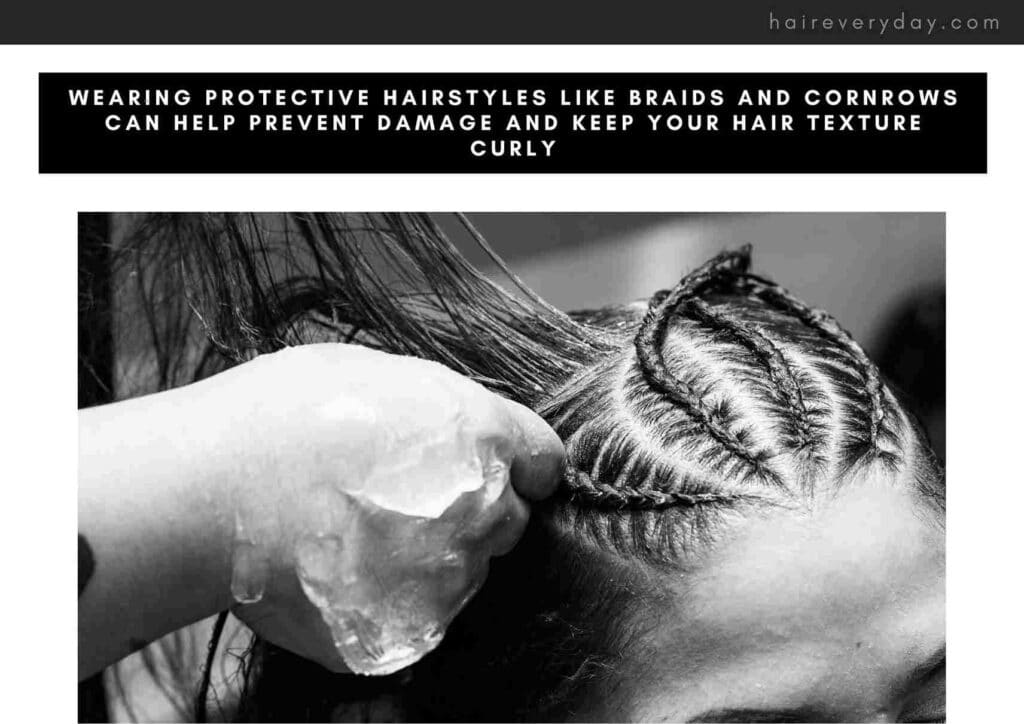
Protect Your Tresses From The Heat
Styling tools can damage your hair and leave your tresses feeling dry and brittle.
I’ve entirely given up on drying my hair with a blow dryer, and instead, air dry it for a more natural effect. Also, I ensure that I use a heat protectant serum generously each time I need to use a styling tool.
Add Oil To Your Routine
A good coconut oil massage right before I go to sleep helps restore my hair’s shine.
Include a hair oil massage session in your weekly routine. I love coconut oil, but even castor oil is known to encourage hair growth and reverse the damage. Rosemary oil is another ingredient that will strengthen your hair and promote healthier growth.
Reduce The Shampooing Sessions
Shampooing your hair only makes it dry, and curls love hydration. I wash my hair once a week (you can do it once every three days) and use dry shampoo on the days between washes.
On days between shampooing, when my hair feels particularly greasy, I go in for the ACV (apple cider vinegar) rinse.
Mix a couple of tablespoons of ACV in one cup of water and wet your strands from the scalp to the tips. This helps maintain a healthy pH level and encourages hair growth.
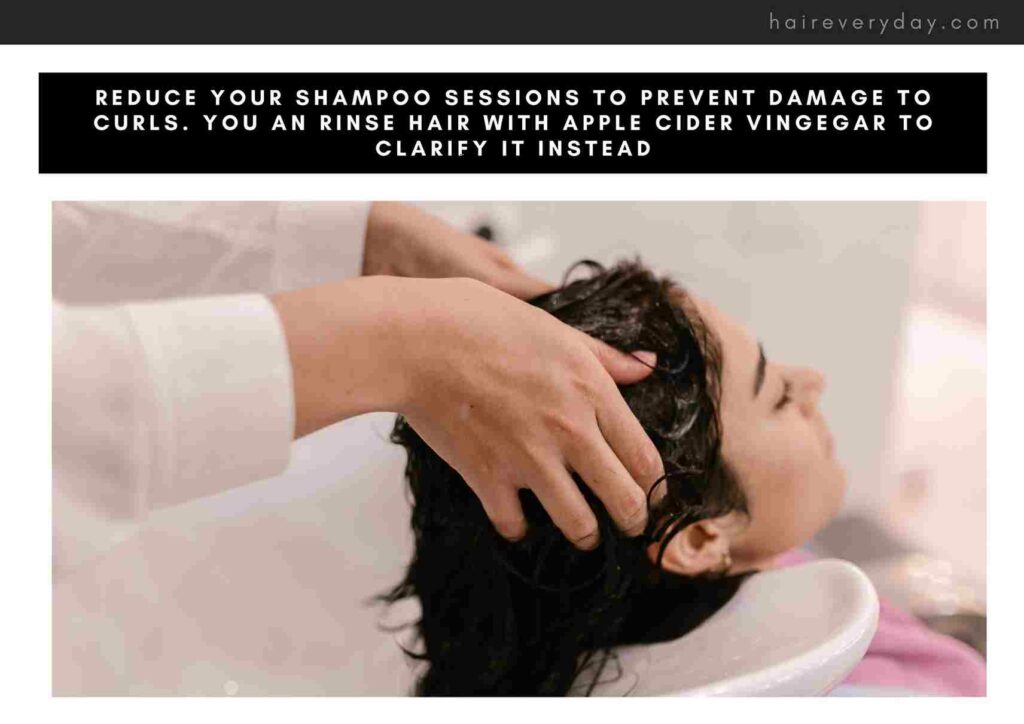
I have also shifted to using conditioners when they are slightly warm, and my hair has never looked healthier.
Pour your deep conditioner into a cup, microwave it for 2-3 seconds until it is warm, and then use it.
This helps your hair soaks in the nutrients more efficiently, and you’ll leave the washroom with a shine in your hair!
Go In For Regular Trims
Nothing like a good trim to remove the dry, brittle ends and give more space to your naturally curly tresses.
Don’t be afraid of cutting off your damaged hair; a good trim will only allow your hair to look healthier and more natural. Book an appointment once in two months.
Go In For A Treatment
Your hair texture is changing, and you probably need an expert’s touch.
If your hair feels damaged, go for a protein treatment that will help your tresses retain moisture more effectively and allow your curls to stay healthy. You can also swap your regular hair care products for protein-rich ones.
Scrunch Your Hair Post Wash
Sure, you had a headful of tight curls, but now that your texture is changing, you need to help the curls a little.
While using your curling products, scrunch your hair in an upward direction and hold it for a few seconds before letting go. You can also do this while applying your conditioner.
Have A Healthy Diet
Sometimes a change in your hair texture can also indicate larger changes in your body.
We’ve all lived through an extremely stressful year, and the strain shows in our bodies in different ways. While you set up an annual check-up with your doctor, making minor changes to your diet is also a good idea.
Keep up a healthy lifestyle with foods rich in vitamin B, healthy fats, proteins, and iron.
Depending on your food preferences, add eggs, berries, spinach, fatty fish, sweet potatoes, avocados, nuts, seeds, sweet peppers, oysters, beans, soybeans, and meat to your diet.
Also, include at least three days of physically exercising to ensure that you are mentally fit and that everyday stress doesn’t lead to any damage.
Set a good sleeping routine for yourself and ensure you get in the required eight hours of snooze.
Why You Should Trust Haireveryday?
The author of this article, Leah Marie Priest has a degree in Cosmetology with years of experience in dealing with hair care, scalp care, and hairstyling. As someone who extensively deals with all kinds of hair textures, products, styling methods and more, hair Leah Marie knows what kind of products and procedures suit each hair type and person. We have also tested these hair products and processes ourselves to provide you an unbiased review about every product. Each of our articles are also reviewed by a team of medical professionals so that you get the most accurate and expert-reviewed information.
Conclusion
While genetics and hormonal changes are irreversible, you can still control your diet and your haircare routine to minimize the damage.
And this also keeps the changing texture to a minimum.
Investing in good products for my curly hair, maintaining a good health care routine, covering my hair with a scarf or a hat while stepping out in the sun, and eating and sleeping well have served as a good starting point for me.
Following these tips has not only been beneficial for my curly tresses but also for my overall health.
Also Read:
How To Get Curly Hair With Straight Hair
Awesome Benefits Of Wrapping Curls In Satin
How To Get Your Curls Back After Straightening Curly Hair
How To Get Rid of Frizzy Curly Hair
Why Does My Hair Curl At The Ends
To Summarize



